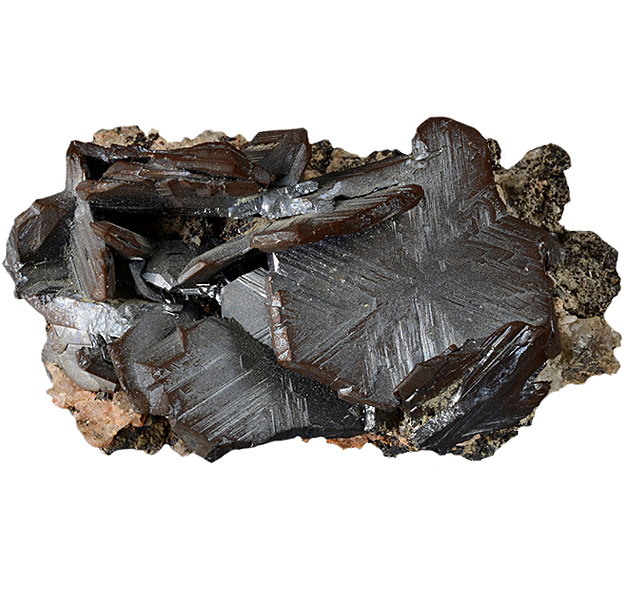
Fact sheet
Goethite is an iron oxide mineral. Although iron ores were found at several locations in Cornwall, iron was never a significant product, contributing less than 1% of the UK’s total output, even during the most productive years of the 1850s–1870s.
Restormel mine was one of Cornwall’s most productive iron mines. It was visited by Queen Victoria and Prince Albert in 1846, and renamed Restormel Royal Iron Mine thereafter. The Queen’s journal records her visit:
"Albert and I got into one of the trucks and were dragged in by the miners. …. Albert and the gentlemen wore miners hats. There was only just room enough to hold up one’s head ……. we got out and scrambled a little way to see veins of ore, and Albert knocked off some pieces."
This specimen shows fibrous goethite with concentric banding in shades of brown and yellow, along with sugary quartz. It came from Restormel Royal Iron Mine, and was probably acquired shortly after the royal visit.
Chemical Formula: Fe3+O(OH)
Specimen no. TRURI: 801.1047
Location: Restormal Royal Iron Mine, Lostwithiel
Grid Reference: SX 098 614
Mindat http://www.mindat.org/min-1719.html
This Collection focuses on Cornwall and West Devon’s mineralogical and mining heritage. The specimens it features are drawn from the collection of the Royal Institution of Cornwall (RIC) held at the Royal Cornwall Museum (RCM).
This collaborative project involving the RCM, the Cornish Mining World Heritage Site and The Open University explores how access to the RIC’s mineral collection and the stories it can tell can be widened using digital technology. It includes radioactive minerals from Cornwall that would otherwise be inaccessible to the public for health and safety reasons.
Sample details
More from this collection











